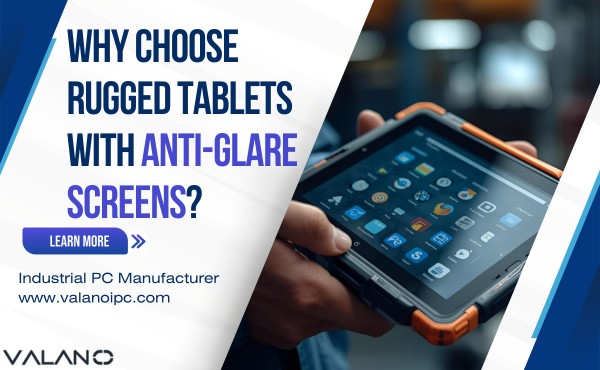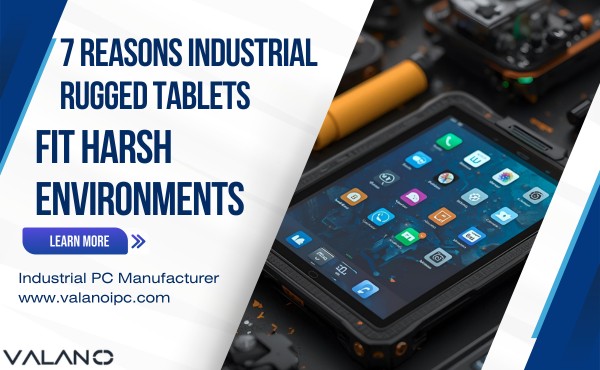Customizing industrial PC configuration for harsh environments significantly enhances reliability and safety. Every industrial PC encounters unique challenges such as heat, dust, moisture, and vibration. A carefully planned industrial PC configuration ensures the setup aligns with both the demanding industrial conditions and the specific application requirements. Many engineers focus on configuring an industrial PC to endure severe weather or heavy machinery. Selecting the right industrial PC configuration turns a standard device into a durable and robust industrial computing solution.
Key Factors to Consider When Choosing an Industrial PC
Environmental Factors
Industrial environments often present extreme conditions. Engineers must evaluate the temperature range where the industrial computer will operate. Some locations experience rapid temperature changes, while others maintain high or low temperatures for long periods. Dust and moisture can damage sensitive components.
A rugged enclosure protects the industrial pc from these hazards. Vibration from heavy machinery can loosen connections or damage internal components. Selecting rugged industrial computers ensures reliability in these settings. Power sources may fluctuate or become unstable in industrial sites. Stable power sources help protect the industrial computer and its components from unexpected shutdowns.
Application Needs
Every application has unique requirements. Performance needs depend on the tasks the industrial computer must handle. Some applications require high processing power, while others focus on memory needs or storage. Connectivity options, such as serial ports or Ethernet, support integration with other industrial equipment.
Compliance with industry standards ensures safe and legal operation. Engineers should list all required components before starting the configuration. The right industrial pc supports both current and future needs. Reliability remains a top priority for any industrial application.
- Consider these questions:
- What is the required temperature range?
- What are the memory needs?
- Which power sources are available?
- What components must the industrial computer support?
Hardware Selection
Processing Power
Processing power stands as a critical factor in any industrial pc configuration. Engineers select a processor based on the workload and application needs. Some industrial computers require high processing power for real-time data analysis. Others need less power but must operate reliably for long periods. The choice between Intel and AMD processors depends on compatibility and performance benchmarks. Wide temp components help maintain processing power in extreme environments. A strong processor ensures the industrial computing solution can handle demanding tasks.
Memory and Storage
Memory and storage play a vital role in industrial pc performance. Engineers choose RAM size based on the complexity of the application. More memory allows the industrial computer to run multiple processes smoothly. Storage capacity depends on the amount of data the system must handle. Solid-state drives (SSDs) offer fast access and better durability than traditional hard drives. Expansion options allow for future upgrades. Rugged components protect memory and storage from shock and vibration.
- Table: Memory and Storage Options
| Component | Benefit | Industrial Feature |
|---|---|---|
| RAM | Faster processing | Wide temp components |
| SSD | Quick data access | Rugged construction |
| Expansion Slot | Upgrade capability | Secure mounting |
Form Factor and Enclosure
The form factor determines how the industrial pc fits into the workspace. Engineers select from rackmount, wallmount, and embedded options. Fanless and ventless designs reduce dust intake and improve reliability. Rugged enclosures protect the industrial pcs from dust, moisture, and vibration. IP ratings indicate the level of protection against environmental hazards. A high IP rating means better defense in harsh settings. Rugged industrial computers often use metal enclosures for extra durability.
Connectivity Options
Connectivity options define how the industrial pc communicates with other devices. Engineers look for serial ports, USB, Ethernet, and wireless data connections. The right mix of ports supports integration with sensors, controllers, and other industrial components. Rugged connectors prevent accidental disconnections in high-vibration areas. Reliable data connections ensure the industrial computing solution operates without interruption. Expansion cards add more connectivity if needed.
- Checklist for Connectivity:
- Serial and USB ports
- Ethernet and wireless support
- Rugged connectors
- Expansion slots for future needs
A well-chosen industrial pc configuration brings together processing power, rugged components, and flexible connectivity. This approach creates a reliable industrial computing solution for any harsh environment.
Software and Configuration
Operating System
Selecting the right operating system forms the foundation of any industrial computing solution. Engineers often choose between Windows, Linux, or real-time operating systems based on application needs. The setup process starts with installing the OS on the industrial computer. Drivers for hardware components must follow, ensuring full compatibility. Essential industrial software comes next, supporting tasks like data acquisition or machine control. A clean and stable OS installation reduces downtime and improves reliability.
Industrial Protocols
Industrial environments require robust communication protocols. Engineers configure an industrial pc to support protocols such as Modbus, OPC UA, or EtherNet/IP. These protocols enable seamless data exchange between machines and control systems. The setup includes installing protocol drivers and configuring network parameters. Proper configuration ensures the industrial pc communicates with sensors, PLCs, and SCADA systems. Testing each protocol after setup helps identify issues early.
- Common industrial protocols:
- Modbus
- OPC UA
- EtherNet/IP
A reliable protocol setup guarantees smooth operation in any industrial computing solution.
Security Settings
Security remains critical in every industrial pc configuration. Engineers must configure firewalls and enable antivirus protection during setup. Strong passwords and user access controls prevent unauthorized changes. Regular software updates close security gaps. Network segmentation limits exposure to threats. Running diagnostics after configuration verifies that all security measures work as intended.
A secure configuration protects both the industrial computer and the entire operation from cyber risks.
Validation and Maintenance
Testing Procedures
Engineers must verify the reliability of every industrial setup before deployment. Stress testing pushes the configuration to its limits. This process checks how the system handles extreme temperatures, dust, and vibration. Diagnostics tools help identify weak points in the industrial PCs. Regular inspections catch early signs of wear or failure. A reliable ipc setup depends on thorough testing.
Preventive Maintenance
Preventive maintenance keeps the industrial computer running smoothly. Cleaning dust from vents and connectors prevents overheating. Engineers should check for loose cables or damaged parts during each inspection. Updating software and firmware improves security and performance. A maintenance log helps track all actions and issues. This approach increases reliability and extends the life of the setup.
- Preventive Maintenance Checklist:
- Clean enclosures and fans
- Inspect connectors and cables
- Update software and firmware
- Record maintenance activities
Expert Consultation
Complex industrial environments often require expert advice. Specialists can review the configuration and suggest improvements. They help select the right hardware and software for unique challenges. Consulting with experts ensures the setup meets industry standards. This step increases reliability and reduces downtime. Engineers benefit from expert insights when designing or upgrading an industrial setup.
Conclusion
Custom Industrial PC Configuration requires thorough consideration of environmental challenges and application needs. Choosing rugged hardware, stable connectivity, and compatible software forms the backbone of a reliable industrial computing solution. Regular testing, preventive maintenance, and strong security settings ensure long-term performance.
Consulting experts can enhance the configuration process. A well-executed Industrial PC Configuration guarantees robust operation, durability, and efficiency in harsh industrial environments, meeting both present demands and future scalability.









